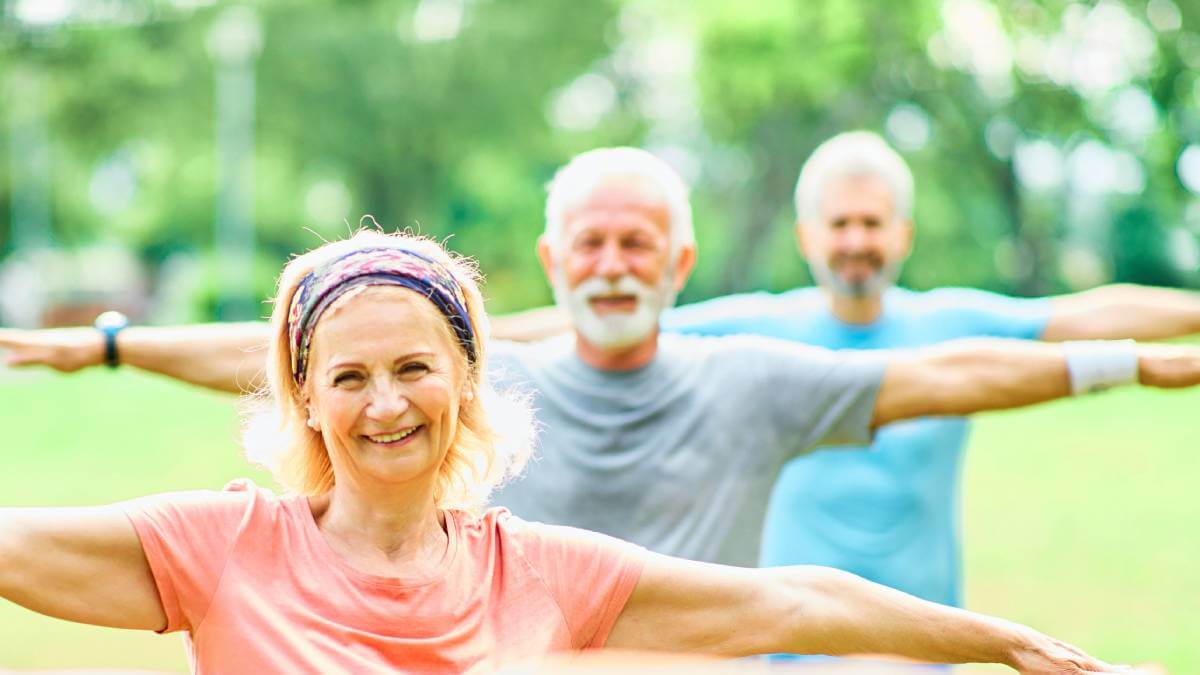Osteoporosis is a condition that requires careful consideration when engaging in physical activities. While some exercises can reduce the risk of osteoporosis or alleviate symptoms, there are certain exercises that may not be safe for individuals with this condition.
High impact sports
People with osteoporosis are at a higher risk of developing muscle weakness, posture issues, and spinal curvature, all of which increase the likelihood of falling. Considering that osteoporosis weakens the bones, even a minor fall can result in severe injury. Engaging in high-impact sports and contact sports can further increase the risk of falls and serious injuries.
It is advisable for individuals with osteoporosis to consult with a doctor to determine which sports to avoid. Examples of sports that may be particularly risky include equestrian sports, skiing or snowboarding, football, hockey and soccer.
Golfing
Golfing may not be as harmful as sports such as football or hockey, but it may lead to injuries that affect the:
- ankles
- knees
- hips
- wrists
- spine
- elbows.
Research indicates that nearly 41 per cent of amateur golfers experience a golf-related injury each year. As such, golfing may not be an appropriate hobby for people with osteoporosis.
Sit ups and crunches
Sit ups involve spinal flexion, which refers to bending the spine. A 2018 review found that sit ups can increase the risk of spinal fractures in individuals with osteoporosis. Although crunches involve a smaller range of motion than sit ups, they still involve spinal flexion.
A physiotherapist can share safe abdominal exercises suitable for those with osteoporosis.
Yoga positions with risks
Yoga is generally beneficial for increasing flexibility and muscular strength. However, certain yoga positions can be dangerous for individuals with osteoporosis. These positions include forward folds, rag doll, pigeon, rolling like a ball and seated twists.
Rapidly transitioning between yoga positions can also increase the risk of fractures. People with osteoporosis should avoid movements such as jumping out of downward facing dog.
Certain weightlifting exercises
Although strength training is important for people with osteoporosis, certain weightlifting exercises can be harmful. These exercises include:
- chest press
- chest fly
- lat pull down behind the head
- knee extensions
- seated rows.
Exercises, such as the chest press, involve spinal compression, which can increase the risk of spinal fractures in people with osteoporosis. Exercises, such as seated rows and knee extensions, may encourage slouching and lead to spinal injuries.
Exercises that may help
While certain exercises should be avoided by individuals with osteoporosis, there are many safe and beneficial exercise options available. Regular exercise is crucial for strengthening bones and muscles, as well as slowing down bone loss. It can also enhance coordination and reduce the risk of falls.
Weight-bearing aerobics
Weight-bearing aerobic exercises are particularly effective for building muscle mass and strengthening bones. Examples of weight-bearing aerobic exercises include:
- dancing
- walking
- climbing stairs
- playing tennis
- jogging.
The appropriate type of weight-bearing exercise varies from person to person based on their condition. Individuals with mild osteoporosis may enjoy activities like brisk jogging or playing tennis, while those with more severe forms of the condition may find low-impact options such as walking more suitable.
Swimming or water aerobics
Research has shown that it can be particularly effective for osteoporosis. A 2020 review notes that regular swimming may increase bone strength in people with osteoporosis.
Water aerobics can also be helpful for improving fitness while minimising stress on the joints, and has been linked to enhanced bone health in postmenopausal women, as per a 2017 review. However, further research is necessary to establish the full benefits.
Other suitable exercises
Although people with osteoporosis may need to avoid specific exercises, there is a wide range of exercises that may be safe for individuals with the disease, such as:
- tai chi
- strength training
- balance exercises
- cycling
- gentle stretching.
Ensure you speak with a doctor before beginning any new exercise program. Only a medical professional can determine which exercises are safe for each individual.
When to speak with a doctor
People experiencing new or worsening symptoms of osteoporosis needs to speak with a doctor. Symptoms may include:
- back pain
- changes in spinal shape
- posture issues.
People with osteoporosis may experience fractures after minor falls or during routine activities. A doctor can identify what is causing the pain and provide treatment recommendations.
Do you have osteoporosis? What exercise do you enjoy? Let us know in the comments section below.
Also read: What is osteoporosis and what will help?
Disclaimer: This article contains general information about health issues and is not advice. For health advice, consult your medical practitioner.

